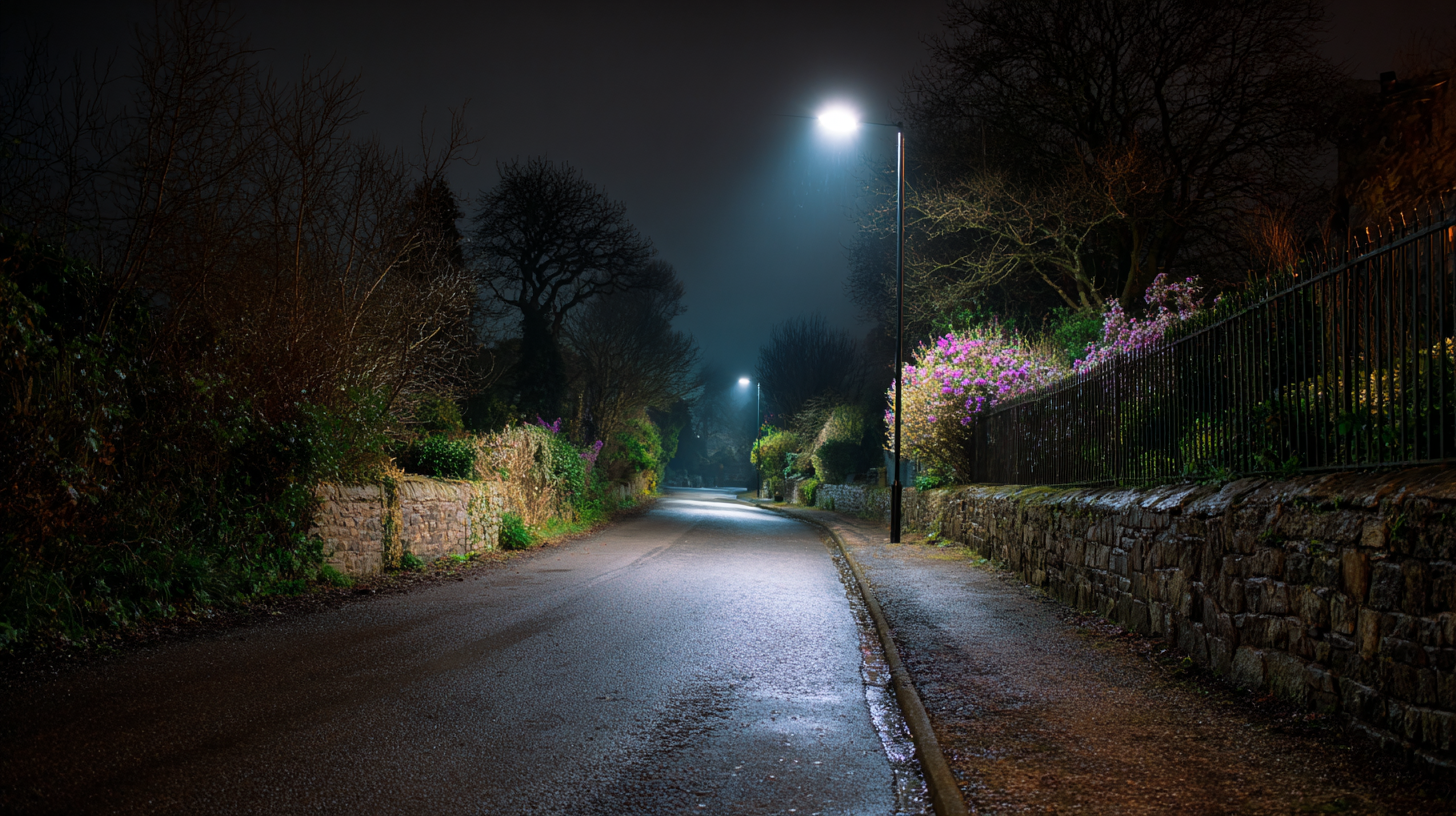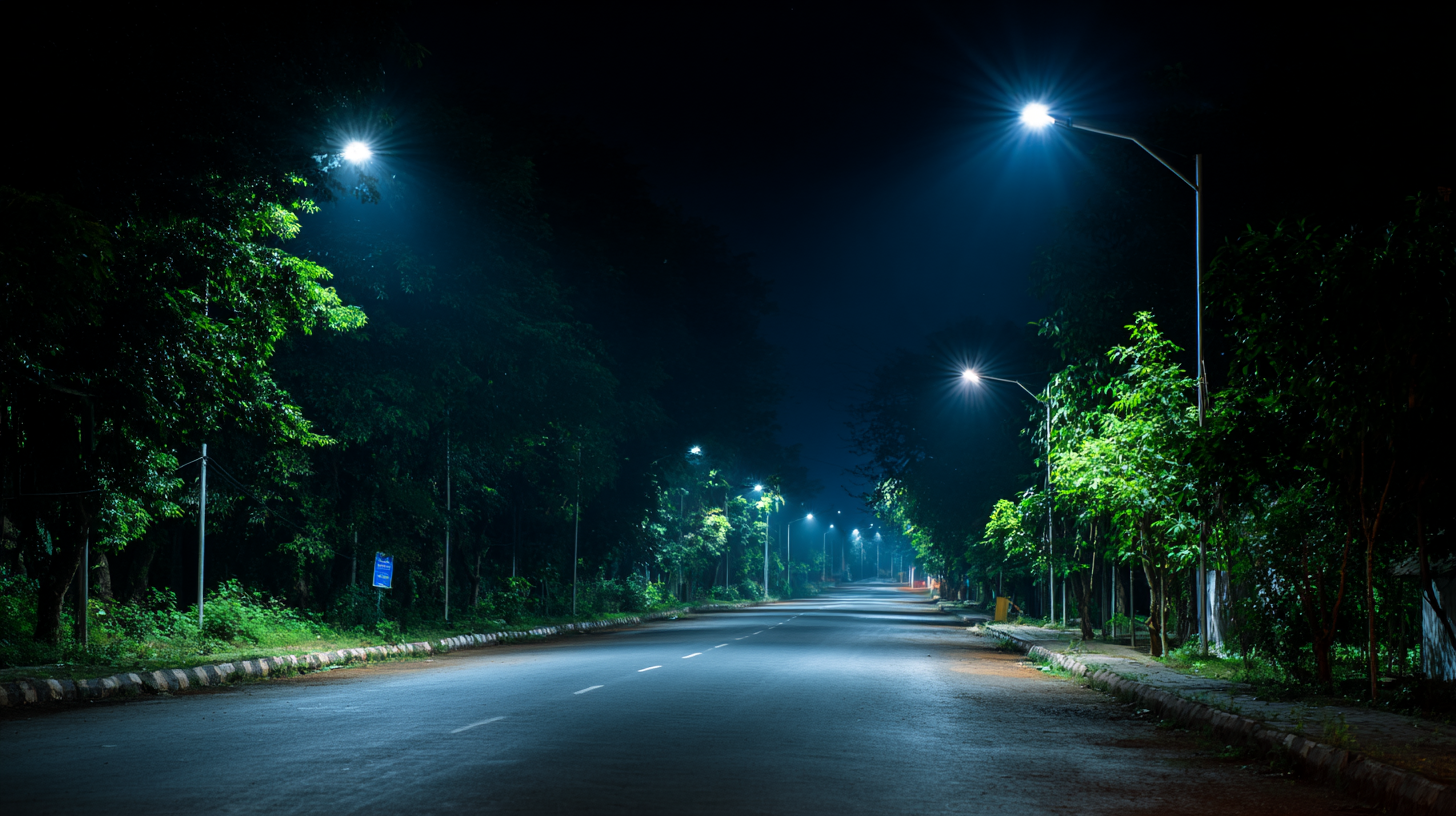7 Best Street Lights to Illuminate Your Path in 2024
As urban areas continue to expand and develop, the role of street lights in enhancing safety and visibility has never been more critical. According to the U.S. Department of Energy, nearly 30% of the total energy used for public lighting comes from street lights, making them essential not only for illuminating pathways but also for promoting energy efficiency in cities. Furthermore, a report by the International Dark-Sky Association highlights that well-designed street lighting can significantly reduce crime rates and improve overall community well-being. In 2024, advancing technology and sustainable practices are guiding the evolution of street lights, with a focus on smart lighting solutions that optimize performance while minimizing environmental impact. This blog will explore the seven best street lights available this year, showcasing their features and benefits to help illuminate your path effectively and stylishly.

The Impact of Smart Technology on Street Light Efficiency in 2024
In 2024, smart technology is revolutionizing the way we illuminate our streets, enhancing both efficiency and safety. The integration of IoT sensors in street lights allows for real-time monitoring and data collection, enabling cities to optimize energy usage. These intelligent systems can adjust brightness based on pedestrian and vehicular traffic, ensuring that lights are only at full power when needed. This not only reduces energy costs but also decreases light pollution, creating a more sustainable urban environment.
Moreover, smart street lights are equipped with capabilities beyond illumination. They can serve as communication hubs, providing Wi-Fi access, emergency notifications, and even surveillance support, enhancing public safety. As municipalities invest in these advanced lighting solutions, the potential for improved urban living spaces becomes increasingly apparent. The combination of energy efficiency, cost savings, and added functionalities positions smart street lights as a pivotal development in urban planning and street infrastructure for the year ahead.
Street Light Energy Consumption in 2024
Comparative Analysis: LED vs. Solar-Powered Street Lights
When it comes to street lighting, the choice between LED and solar-powered options is increasingly important. LEDs are known for their energy efficiency and long lifespan, making them a popular choice for urban environments. They provide bright, consistent lighting and are often equipped with smart technology that allows for remote management and energy usage monitoring. This adaptability makes them ideal for city planners looking to reduce energy costs while enhancing public safety.

On the other hand, solar-powered street lights offer a sustainable solution that harnesses renewable energy. They require no electricity from the grid, which significantly lowers operational costs. Solar lights are especially advantageous in remote or less-populated areas where extending electrical infrastructure can be challenging. However, they do depend on adequate sunlight for optimal performance, which can be a limitation in regions with extended cloudy or rainy periods.
Tips: When selecting street lights, consider the specific needs of your location. For urban areas with reliable electricity, LED lights might be the best option due to their advanced features and lower maintenance needs. Conversely, for rural or off-grid settings, solar-powered lights provide a cost-effective and environmentally friendly solution. Finally, exploring hybrid systems that integrate both technologies can offer the best of both worlds, balancing efficiency and sustainability.
Top 5 Features to Look for in Modern Street Lights
When selecting modern street lights for urban environments, there are several key features that can significantly enhance their effectiveness. First, energy efficiency is paramount. With advancements in LED technology, many street lights now offer reduced energy consumption, leading to lower operational costs and a smaller carbon footprint. This feature is not only cost-effective for municipalities but also supports global sustainability efforts.
Another essential characteristic is smart technology integration. Modern street lights are increasingly being equipped with sensors and connectivity options, enabling real-time data collection and management. This allows for adaptive lighting that can adjust based on pedestrian presence or changing weather conditions, ultimately improving safety and comfort for those navigating the streets. Furthermore, the integration of smart technology can lead to better maintenance scheduling and efficiency, as municipalities receive alerts when a light requires attention.
Aesthetics and design also play a crucial role in the selection of street lights. With urban landscapes evolving, street lights must complement the architectural style of the surroundings. Innovative designs that blend functionality with visual appeal can enhance the overall ambiance of a street while providing the necessary illumination. Overall, focusing on energy efficiency, smart technology, and design can transform public spaces, making them safer and more inviting for everyone.
Evaluating the Cost-Effectiveness of Street Lighting Solutions
When considering street lighting solutions for 2024, evaluating cost-effectiveness is key to maximizing budget efficiency while enhancing safety and visibility. Modern street lights come in various technologies, such as LED and solar-powered options, each offering unique benefits. LEDs, for instance, consume significantly less energy than traditional incandescent bulbs, resulting in lower electricity bills and reduced carbon footprints. This combination of energy savings and longer lifespans makes LEDs a popular choice for municipalities aiming to minimize costs over time.
Solar street lights present another compelling option, especially in areas where traditional wiring may be prohibitive. Although the initial investment can be higher, the absence of ongoing electricity costs and the ability to install them in remote locations without infrastructure can lead to substantial long-term savings. By factoring in installation costs, maintenance, and energy, cities can identify which lighting solutions align best with their financial constraints while still meeting community needs for safety and well-being. Ultimately, the right street lighting system not only illuminates public spaces but also reflects a commitment to sustainable and cost-effective urban planning.

Future Trends in Street Light Design and Sustainability Practices
As urban landscapes evolve, street light design is transitioning to not just illuminate pathways but also to enhance sustainability practices. In 2024, we are witnessing a shift towards energy-efficient LED technology that significantly reduces power consumption compared to traditional lighting. These fixtures not only use less energy but also have a longer lifespan, which means fewer replacements and reduced waste. Many cities are adopting smart lighting systems that adjust brightness based on pedestrian activity, further optimizing energy use while ensuring safety.
Moreover, the integration of renewable energy sources, such as solar panels, is becoming a prominent trend in street light design. By harnessing solar energy, municipalities can minimize their carbon footprint and reliance on the grid, creating a cleaner and more sustainable environment. Additionally, innovative designs incorporating smart sensors and IoT technology allow for real-time monitoring and maintenance, facilitating a more proactive approach to public lighting management. This trend not only improves resource efficiency but also gathers valuable data to enhance urban planning and community safety initiatives.
Related Posts
-

Benefits of Using LED Fixtures for Enhanced Energy Efficiency
-

5 Reasons Why Solar LED Lights Are the Smart Choice for Your Home
-

Exploring Unique Alternatives to LED Wall Pack Lights for Your Outdoor Lighting Needs
-

Unlocking the Advantages of Choosing LED Solar Lights for Your Business Needs
-

The Ultimate Guide to Choosing the Perfect Landscape Lights for Your Outdoor Spaces
-

How to Choose the Best LED Outdoor Lighting for Your Garden
